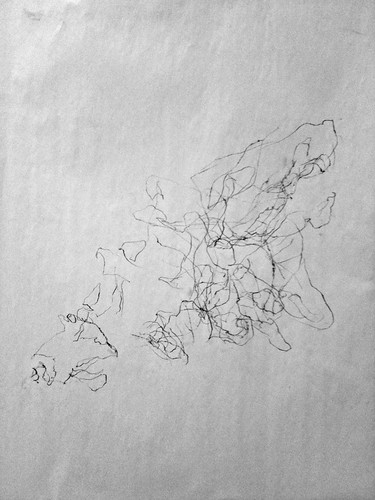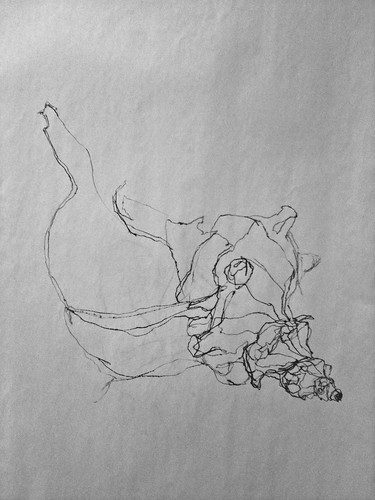We started the class with Blind Contour drawings--making drawings looking only at the object, not at the paper. The objective here is to learn how to ignore or subordinate the outcome of the drawing in order to concentrate on the object's form, to learn how to focus intently on the object as your eyes move across it and your arm and hand follow your eye's movement. The goal is not to reproduce a likeness of the shell, although if one observes the shell carefully and draws the contours slowly, there will be a sense of a shell, or a shell-like image on the page, even if it is not proportional or "realistic."
 |
| blind contour drawing of shell (30 minutes) |
The second drawing we worked on was a Continuous-line Drawing of the shell. This time we could look at the paper as we were drawing, but still tried to maintain the careful focus of the blind contour drawing. The rule for this drawing is that we were to keep the feel of a single line moving across the shell and the page. We were to keep our drawing tool in contact with the paper at all times (or putting it back exactly at the point from which we removed it if our arms needed a break). The idea here is that you want to trace the shell's form constantly with your eyes and hand, not skipping over difficult or "boring" parts, but moving along every part of the shell, seeing the ins and outs of the form, and revealing that careful path in the drawing.
 |
| continuous-line contour drawing of shell (30 minutes) |
Students met in small groups after completing these drawings to discuss the qualities and attributes of line in the drawings, and how line was functioning on the picture plane. They described such line characteristics as: value, thickness, angularity, curve, speed, precision, layering, etc. For each drawing, they also had to address the question: how carefully observed was this shell? and what gives that impression?

No comments:
Post a Comment